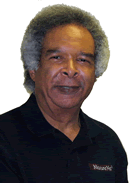Wood's Corner - We Love Our Instruments

MeasureNet Spectrum
I was attending a reception for a guest speaker at the University of Cincinnati chemistry department the other day, held in the Departmental Apparatus Museum. The museum is part of The Oesper Collections in the History of Chemistry, which also includes books and journals displaying the history of chemistry from 1600 to 1959. What struck me the most was the collection of early 20th century chemistry instrumentation. On display were early pH meters and a battery powered Beckman DU spectrophotometer. Remember, not all laboratories had reliable electricity back then; in fact the early polarograph (not on display) developed by Heyrovsky, had a hand cranked generator for a power source. Therefore it took two people to conduct an experiment--one to turn the crank at a constant speed, and another person to manipulate the polarographic apparatus. The importance of these instruments is that they were among the first commercial instruments available that paved the way for what we have today. Prior to the availability of commercial instruments it was difficult for research laboratories to directly compare the results of experimental data collected with instrumentation. The instruments were hand-built, to the specifications of each investigator. Even if one investigator tried to build to another researcher’s specifications, there were likely to be differences in the final construction.
For example, consider a hypothetical situation: let’s say that we want to compile information on the measurement of the freezing point of cyclohexane—a routine MeasureNet experiment. Employing a coaxial test tube arrangement to hold the sample so that we can accurately measure the liquid to solid transition, we have three groups conduct the experiment. Group #1 uses a mercury thermometer, group #2 uses an instrument with a slow response sensor (unknown to them); and group #3 uses an instrument with a fast response sensor. Group #1 feels comfortable taking temperature readings every 10 seconds, while the other two groups let their instruments collect data every second. All three groups employ constant stirring and expect the cooling curves to show an abrupt change when freezing begins, thus allowing the freezing point to be determined from the cooling curve. Each group repeats the experiment several times and averages the results.
The freezing points found by groups #1 and #2 agree, however group #1 reports occasionally observing a spurious data point in the cooling curve occurring somewhat below the freezing point. Group #3 consistently observes a small dip (or glitch) in their plot, instead of a simple break, occurring at the freezing point in the temperature-versus-time curve. The group does not have an explanation for the dip but observes, if one extrapolates across the glitch, their freezing point is in agreement with that of groups #1 and #2. Group #3 reports their findings, including a description of the glitch.
Other researchers see the report by group #3, purchase identical instrumentation, and start to investigate the “strange glitch.” They immediately rule out instrumentation effects and conclude that in the freezing process of cyclohexane, the sample remains in the liquid state in spite of reaching a temperature about 0.20 degrees C below the freezing point of the solution. Then rather suddenly the solution starts to crystallize and the temperature starts to rise until it equals the amount it had dropped in the dip. Finally, one researcher gives the phenomenon a catchy name of “supercooling dip” and the name sticks. The phenomenon is then observed in other liquids as they freeze. Thus a new phenomenon that occurs in the freezing process is discovered.
Of course the above story is a simplified description of how science works. It was written to show the important role that chemical instrumentation played in the laboratories of the past and continues to play in the laboratories of the present. While the occasional “spurious” data point observed by group #1 hinted at the effect, it was only possible to examine it in detail with the appropriate fast sensing instrumentation.
My colleagues and I at MeasureNet Technology strive to produce the most intuitive and functional chemical instrumentation for your freshman and advanced chemistry laboratories. If you’re stuck on a probeware issue or need helpful guidance on its best use, contact me!
See you at the ACS meeting in Atlanta…

Elwood Brooks, Ph.D., is a MeasureNet Senior Applications Specialist frequently seen circling Cincinnati on a variety of motorcycles. He can be reached at brooks@measurenet-tech.com